The D-Fi are a tunable set far removed from KZ’s traditional V-shaped offerings.
Knowledge Zenith (KZ) needs no introduction – the company is one of the most prolific ChiFI manufacturers, churning out gear almost weekly. A common criticism is that a “PRO” or “ULTRA” version is released soon after the original KZ model debuted, leaving first adopters in the lurch.
It seems a bit like a “throw as much stuff on the wall and see what sticks” modus operandi, using consumers as beta testers. Be that as it may, KZ undoubtedly is one of the founding fathers in this industry, and ChiFI IEM connoisseurs certainly will have encountered a pair of KZs on their way down this rabbit hole.
- Solid build
- Very comfortable
- Decent accessories
- Organic timbre
- Pleasant tonality, non-fatiguing
- Excellent price-to-performance ratio
- Easy to drive
- Mediocre technicalities
- Below average isolation
- Tuning switches are mostly a gimmick
- Second-rate stock cable
- Hiss with some sources
KZ tends to name IEMs with a mishmash of alphabet soup, and even the most ardent of fans may need help keeping up with multiple sidegrades. Another potential vexation is that KZ’s house sound is mostly V-shaped, with criticisms of harsh treble.
Driver scandals aside, in the past, the company seemed guilty of pursuing a high driver count without due regard for proper implementation. Though thankfully, KZ has been getting more polished recently, with the Ling Long and ZVX garnering rave reviews.
Spoiler: today’s KZ release, the D-Fi, sound closer to a Moondrop transducer than KZ’s normal V-shaped sonics!
Technical Specifications
- Form: IEMs
- Drivers: 10mm dual-magnet dynamic driver
- Impedance (Ohm): 23.5Ω (standard version), 29Ω – 48Ω (tuning switch version)
- Sensitivity (dB): 110
- Frequency Response (Hz): 7Hz – 45kHz
- Removable Cable: Y
- Cable: high-purity silver-plated cable
- Source Plug: 3.5 mm
- Cup/Shell Plug: 0.75 mm 2-pin
Packaging
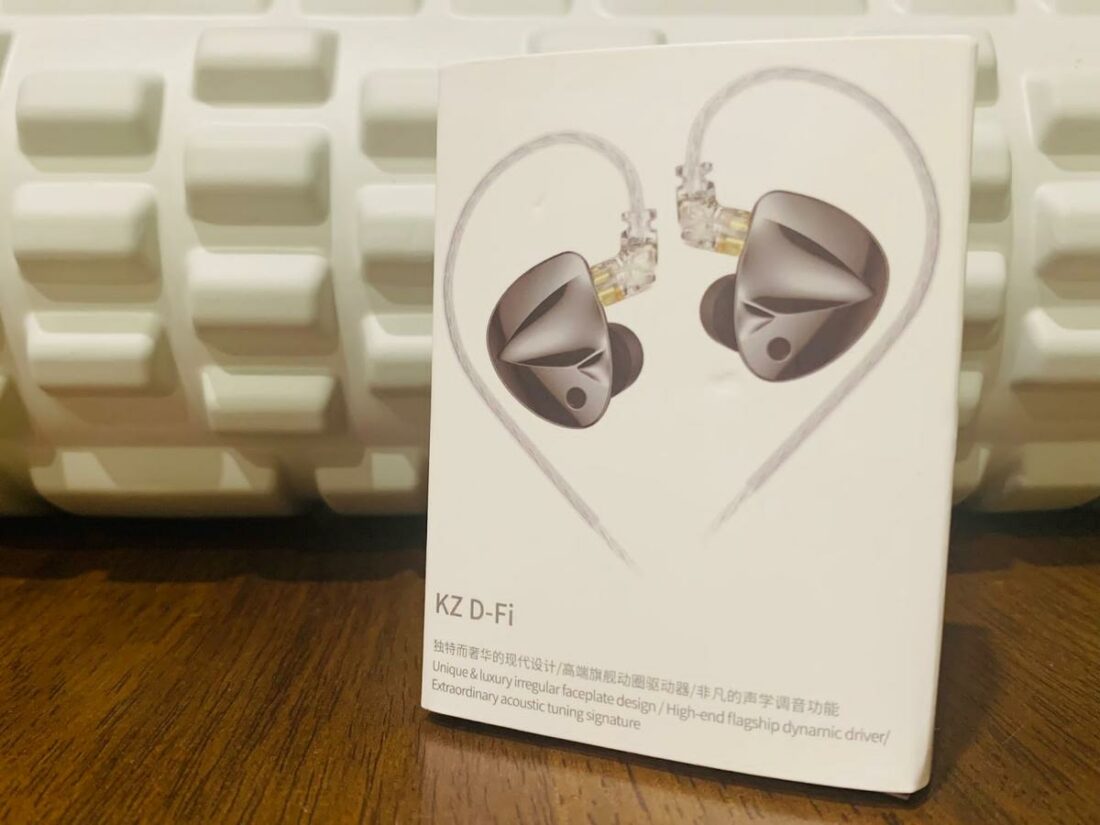
In the box
- KZ D-Fi IEMs
- 1 pair of foam tips
- 3 pairs of wide-bore silicone ear tips
- 3 pairs of narrow-bore silicone ear tips
- Cable
- Card pin
The accessories are acceptable for a budget-priced pair of IEMs, and I won’t nitpick on the lack of a carrying case.
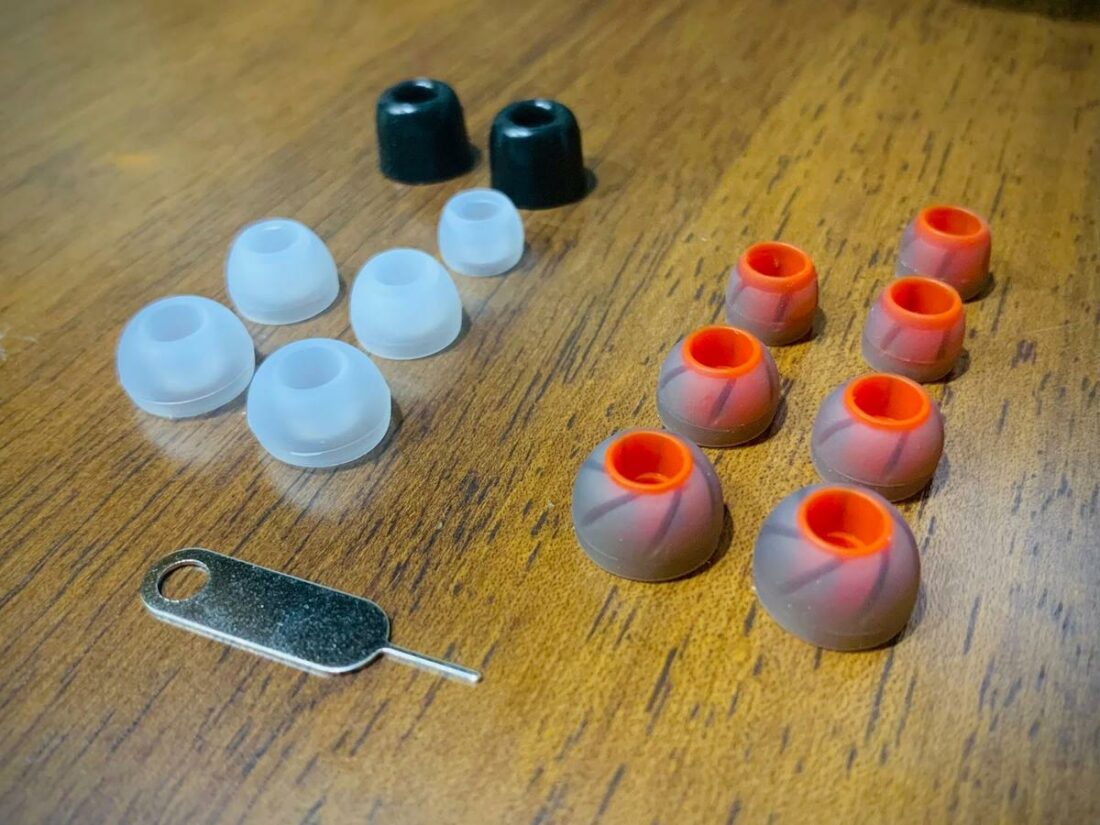
The white narrow-bore tips boost bass at the expense of a compressed soundstage, whereas the wide-bore gray ones increase the higher-end and expand the soundstage. The foam tips give the best passive isolation, though these tame the treble.
Cable
The silver-plated stock cable is tangly and thin, with microphonics in abundance. It doesn’t even have a chin cinch! I guess this is expected for something this cheap, and it is no biggie sourcing aftermarket cables. The D-Fi utilize a 2-pin 0.75mm connector.
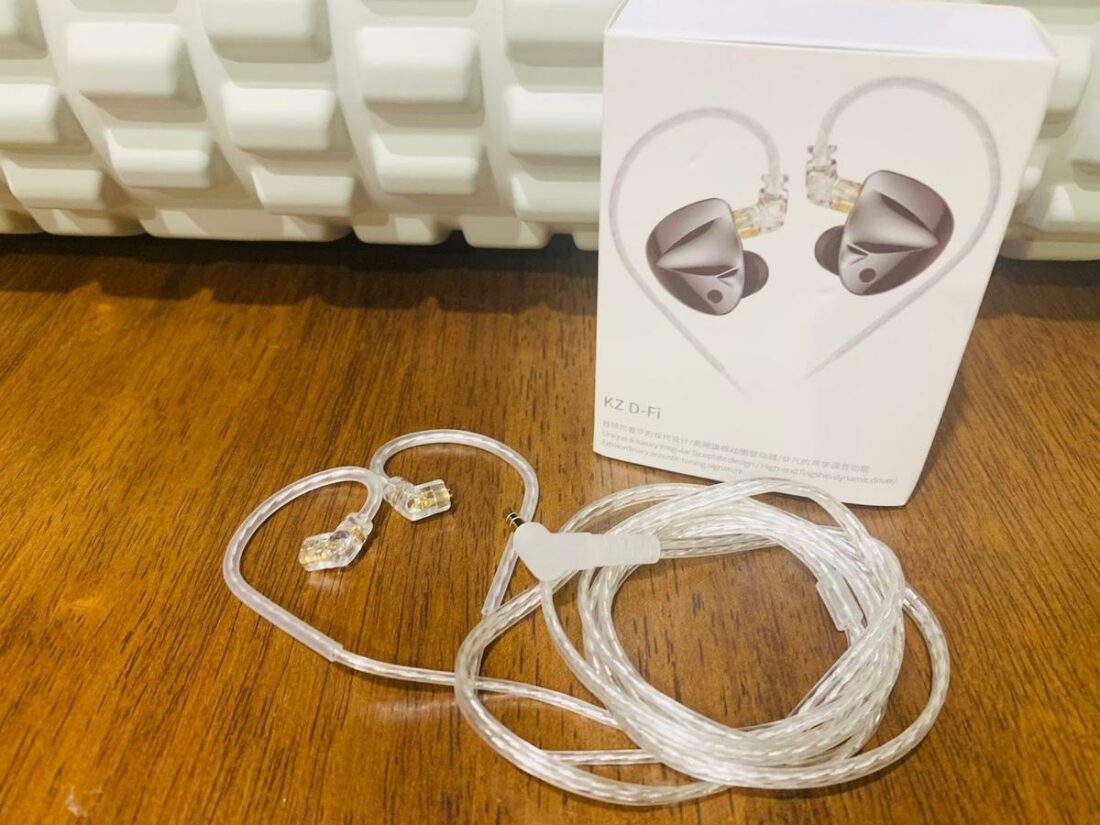
Design
The chassis is fashioned from metal, with a mirror-like, hand-polished alloy faceplate. I’ve no complaints on the build front; these IEMs are very solidly made.
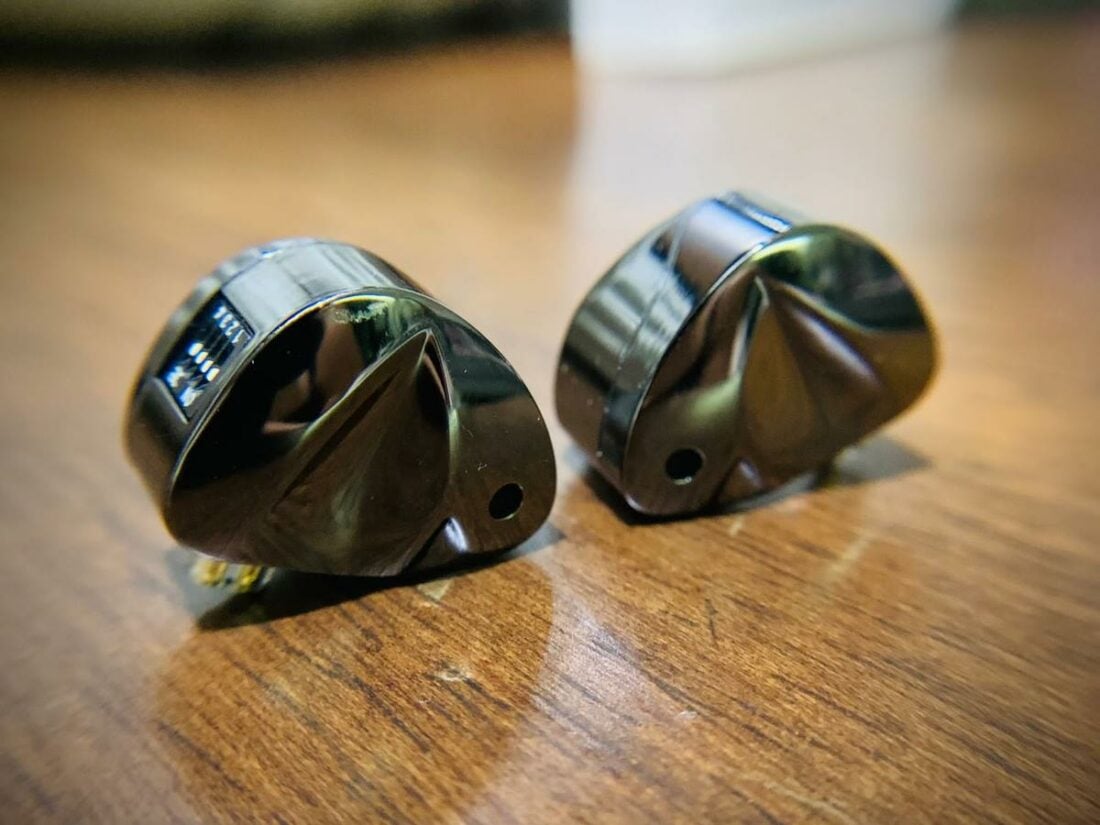
The housings are teardrop shaped, with an elegant asymmetrical pattern on the faceplate, and are tasteful compared to the usual run-of-the-mill budget gear.
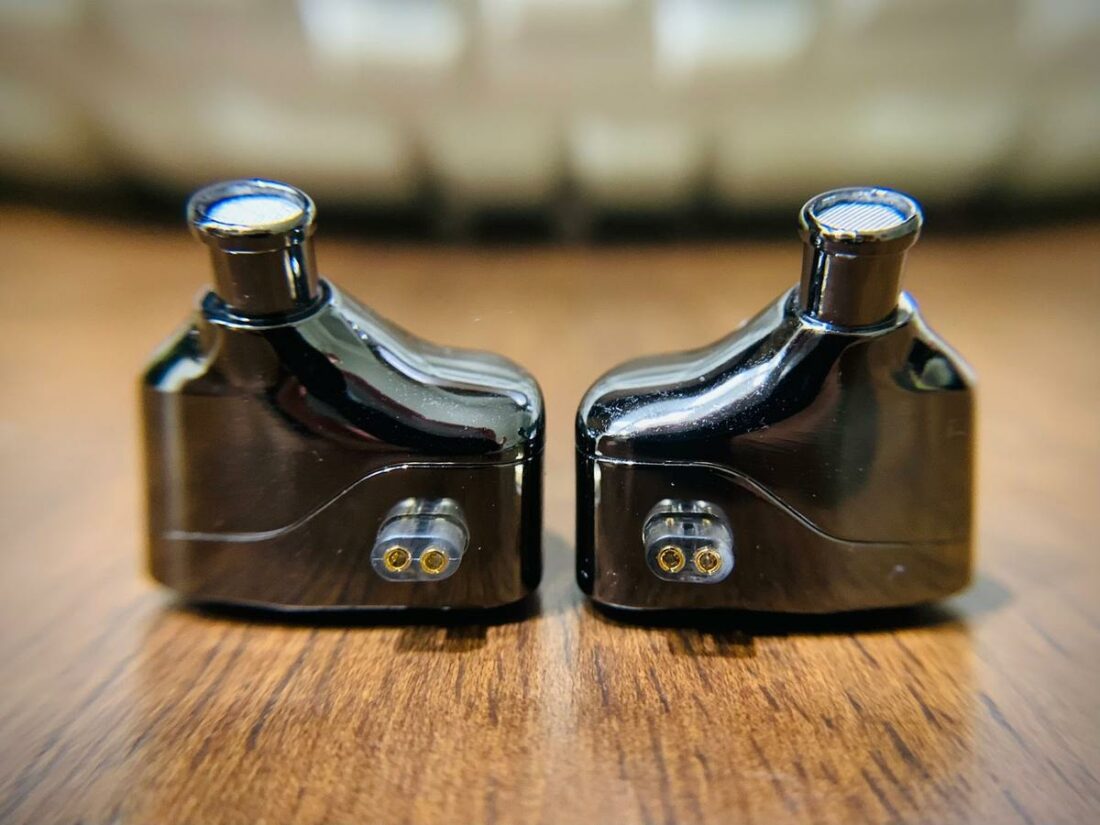
Comfort
The earpieces are one of the most comfortable designs I’ve tried.
They feature superb ergonomics coupled with a light weight, without awkward protrusions. I have no issues using them for marathon listening sessions.
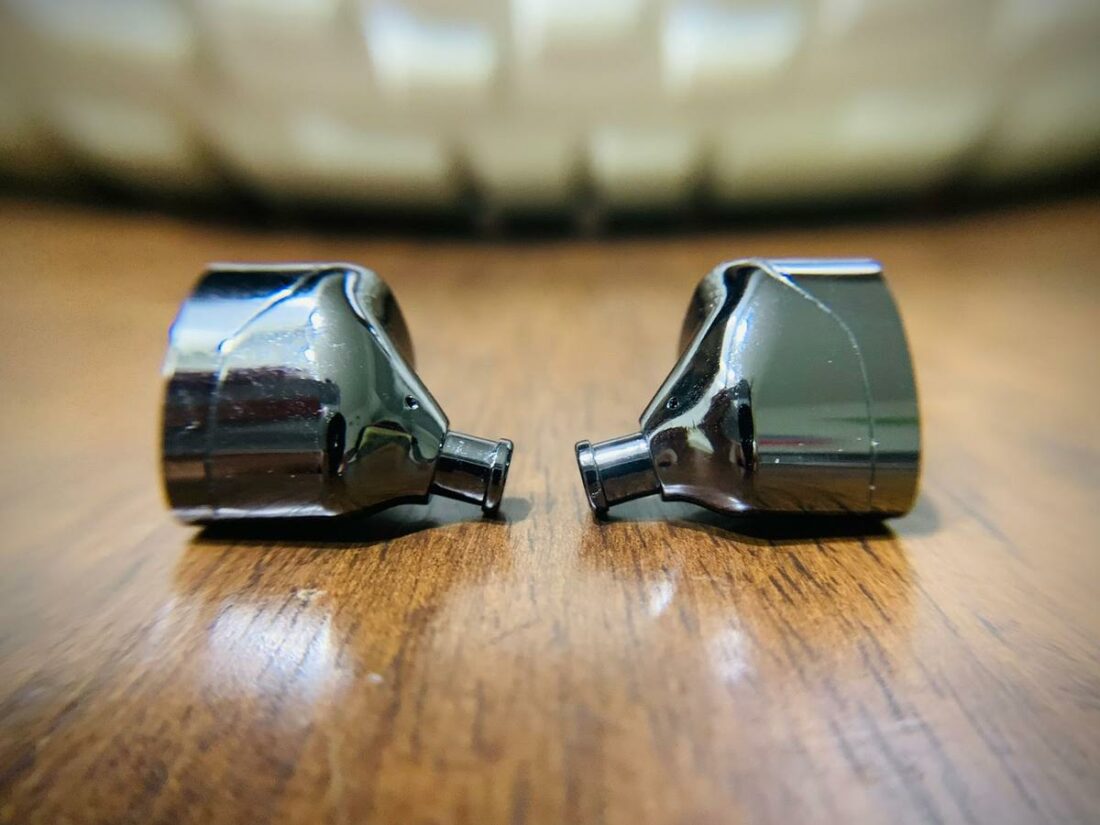
I did not find driver flex, but this may depend on the ear tips used and your ear anatomy. Isolation is below average because of the vented housing.
Internals
The D-Fi employ a 10mm dual magnetic DD setup. KZ advertises that this generates a magnetic field of two magnets instead of the regular one, thus improving transients.
A Zobel network circuit – only available in the tunable model of the D-Fi – is installed to nullify the effects of inductance and capacitance via a hub of resistor-capacitor networks.
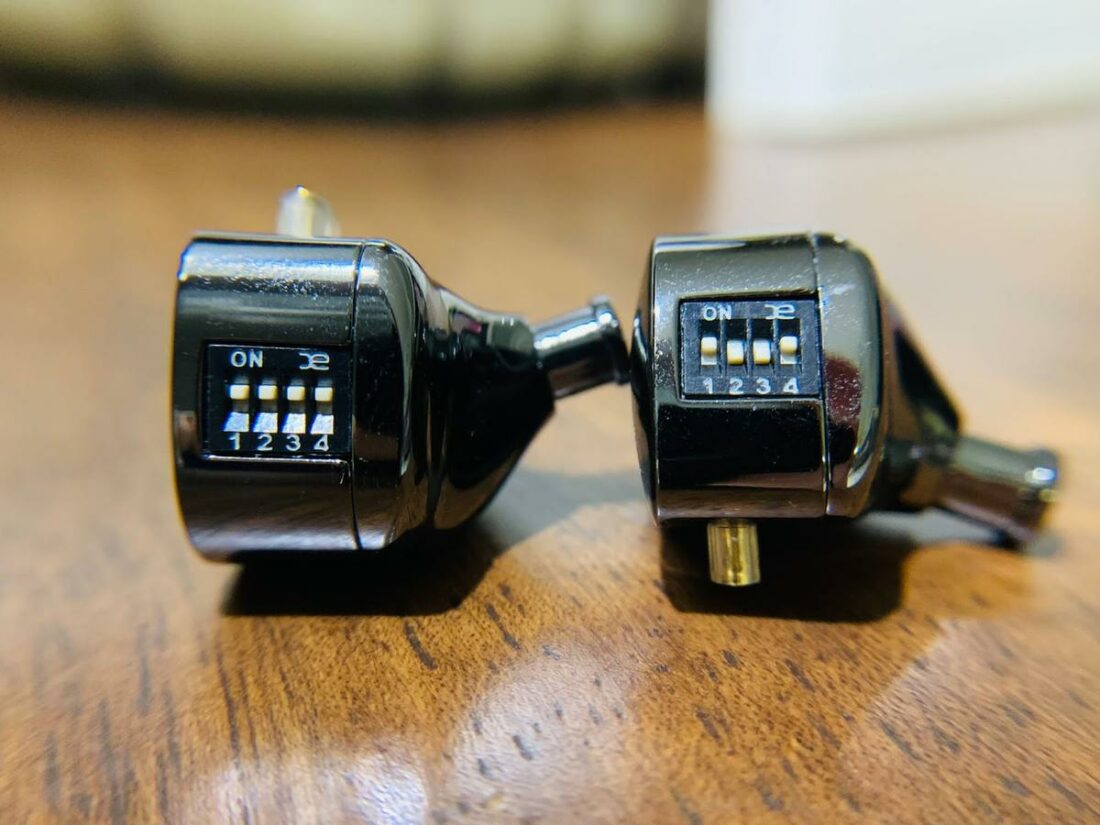
The first three switches modify the bass, whereas the fourth handles the upper frequencies. Manipulating the switches is as easy as pie with the provided card pin; they lock with a satisfying click.
Read on to find out if the switches are a game-changer!
KZ D-Fi Sound
The D-Fi are easy to drive. Amplification may provide a tighter bass with better dynamics but is not essential.
Due to their high sensitivity, the D-Fi may hiss with sources with poor noise floor control.
Timbral accuracy is very natural for vocals and acoustic instruments, in keeping with the D-Fi’s DD roots.
The D-Fi are subpar when it comes to technical chops. Micro-detailing, instrument separation, imaging, and clarity are below average. The soundstage is intimate in all three dimensions, and music sounds congested and veiled when complex riffs come out to play.
The D-Fi are for chilling and relaxing to music rather than critical listening.
The D-Fi have a tonality that is akin to a Moondrop FR – they are truly the antithesis of a run-of-the-mill KZ set! KZ enthusiasts may find the D-Fi undynamic and dull compared to the usual head-banging fun they are familiar with.
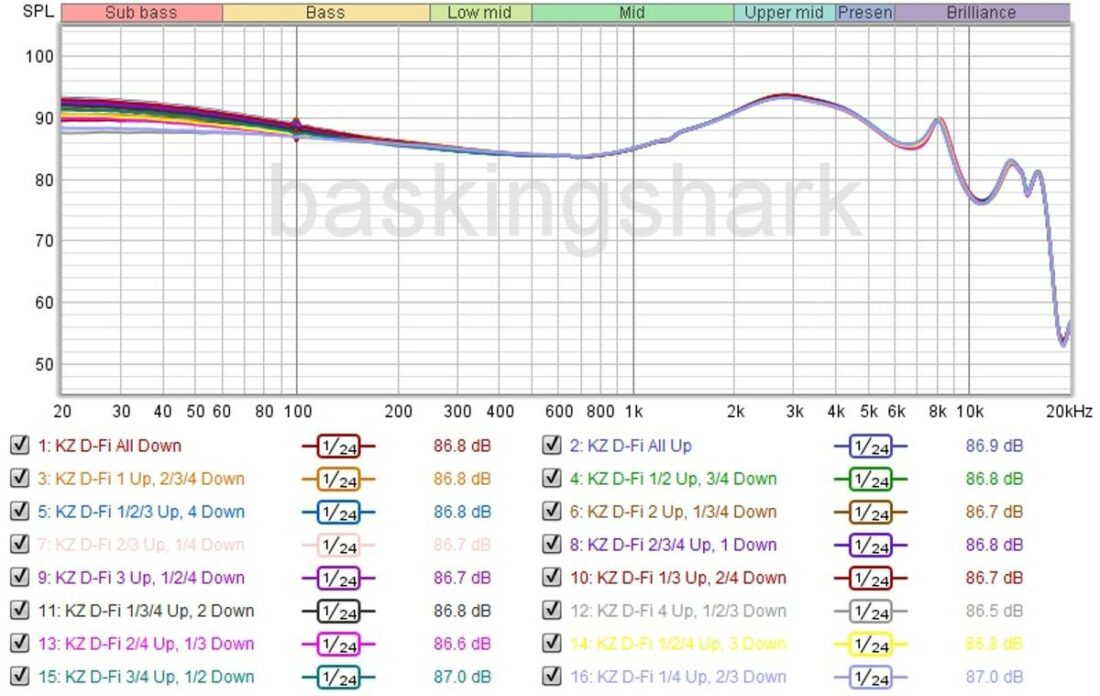
KZ’s marketing materials trumpet that the four tuning switches can provide sixteen contrasting permutations. The tuning switches make subtle differences, with only a 4dB difference in bass between the most extreme of presentations and the rest of the profiles falling in between.
The D-Fi can be described as neutral with a sub-bass boost.
Bass
The D-Fi are sub-bass focused, with moderate bass extension. Bass quantity is just north of neutral, depending on whether the bassiest or least bassy profile is activated. Having said that, the D-Fi are not a bona fide basshead pair of IEMs even with all switches flicked up.
Bass is quite agile and textured on the bass-lite variations. On the flip side (no pun intended), once the bassiest configuration is in place, the bass becomes muddy and ponderous.
Midrange
The lower midrange is neutral. This region is pretty transparent on the least bassy switch, though the bassier options add mid-bass bleed, which may encroach into the mids.
The upper mids are just a tinge forwards, with a 9dB pinna gain ensuring vocals are in front without being overly shouty.
Treble
Treble rolls off early in the D-Fi, even on the least bassy permutation. This is a far cry from the garden variety KZ steroid-infused treble, and treble-sensitive folk should be quite at home with this tuning choice.
Sibilance is minimal, with a smooth higher end. This is a double-edged sword, as there is a lack of air, clarity, and sparkle, which may not be a treblehead’s cup of tea.
Comparisons
I will compare the D-Fi against other budget DD types that are tunable. Planars, hybrids, and pure BA IEMs are omitted, as the different transducers have their own pros and cons.
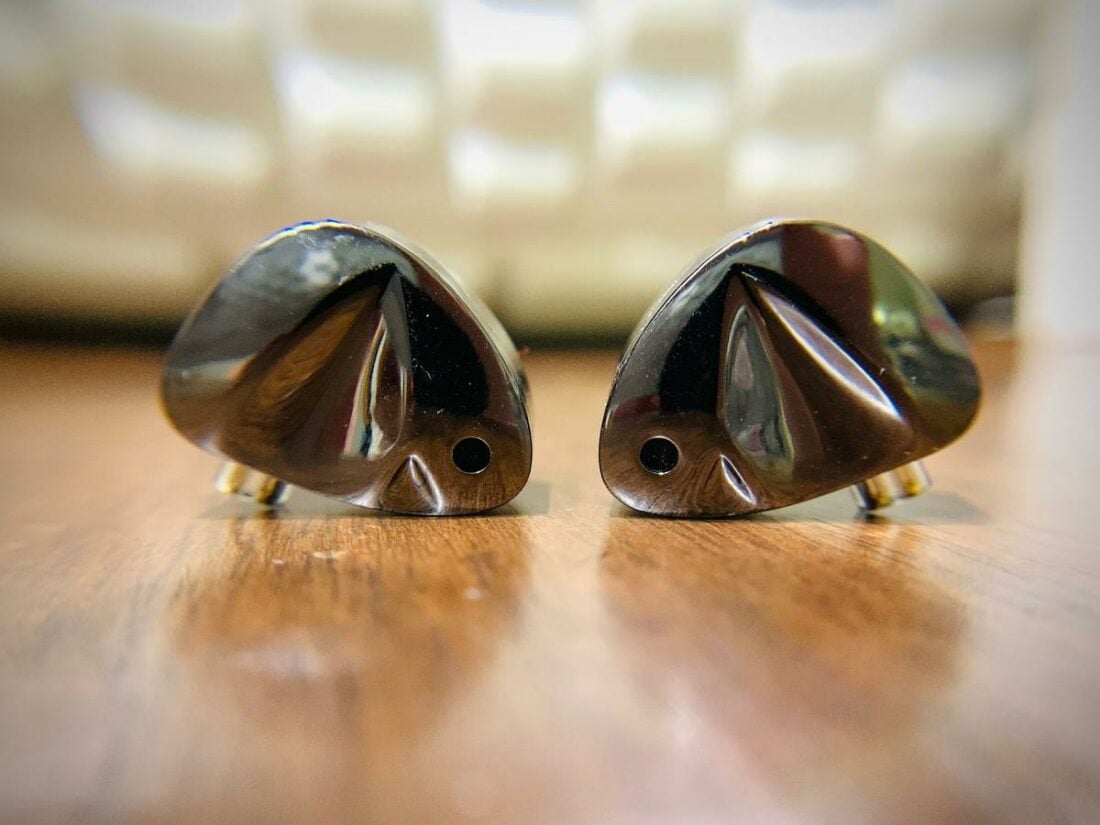
Vs. Simgot EA500
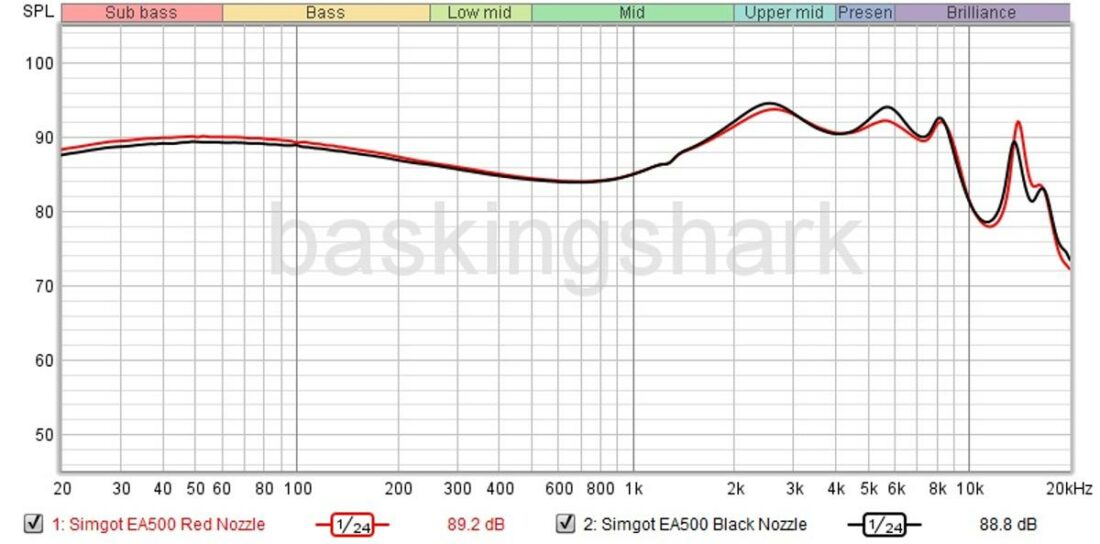
The EA500 operate via two screw-on tuning nozzles instead of switches. With the black nozzle installed, the EA500 have a neutral-bright lilt, whereas there’s a warmer Harman-like tone on the red one.
The EA500 have a slightly thinner note weight and sound more metallic in timbre. The EA500 have more air and sparkle, with a greater treble extension on both tuning nozzles.
The EA500 boast superior technicalities, with a slightly wider soundstage, better imaging, micro-detailing, instrument separation, and micro-details. They cost about 2-3x the price of the D-Fi.
Vs. TRI Star River
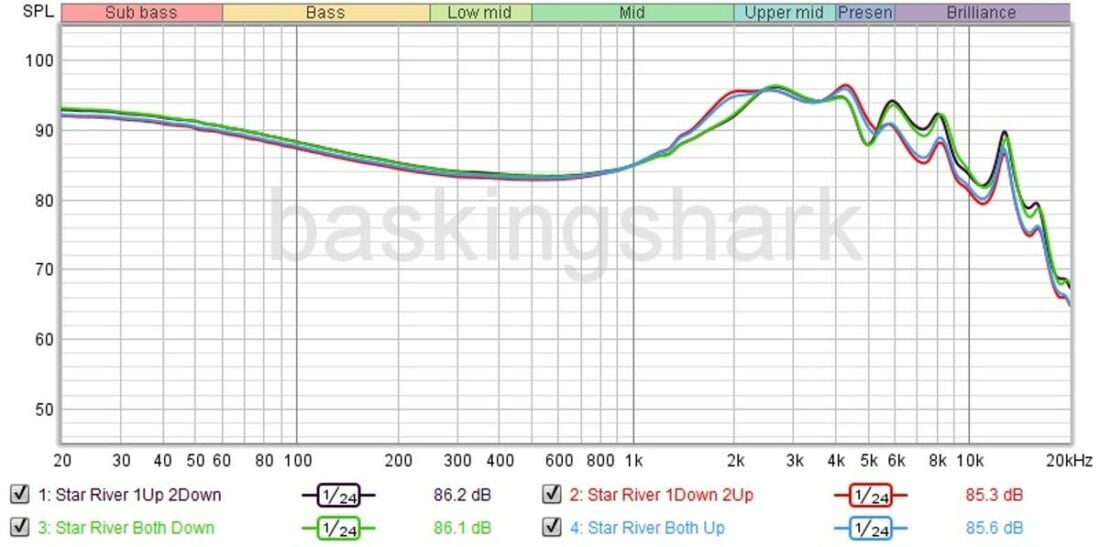
The Star River also incorporate tuning switches. Like the D-Fi, these switches are somewhat duplicitous – out of four promised signatures, there are only two on independent graphs, with both sporting an old-school V-shaped profile.
I also encountered QC defects on my Star River – one side’s switches were stuck, requiring considerable force to toggle them.
The Star River are shoutier and more fatiguing, sounding quite unrefined in the upper midrange and treble. Timbre is also less natural, with a thinner note weight.
The Star River have slightly better technical prowess, with improved soundstage, micro-detailing, clarity, instrument separation, and imaging. However, the bar is low, as other DD-type transducers easily beat the Star River in this department.
Where to Buy
Conclusion
The D-Fi defy expectations of KZ tuning.
They are a different kettle of fish from KZ’s customary V-shaped beasts, sounding refined and neutral with a sub-bass boost. Indeed, the D-Fi would not be out-of-place if packaged in a Tanchjim or Moondrop box with a waifu gracing the front.
The D-Fi are non-fatiguing, smooth, and laid-back, with a natural timbre. Ergonomics, build, and accessories are acceptable for IEMs retailing at around USD$30.
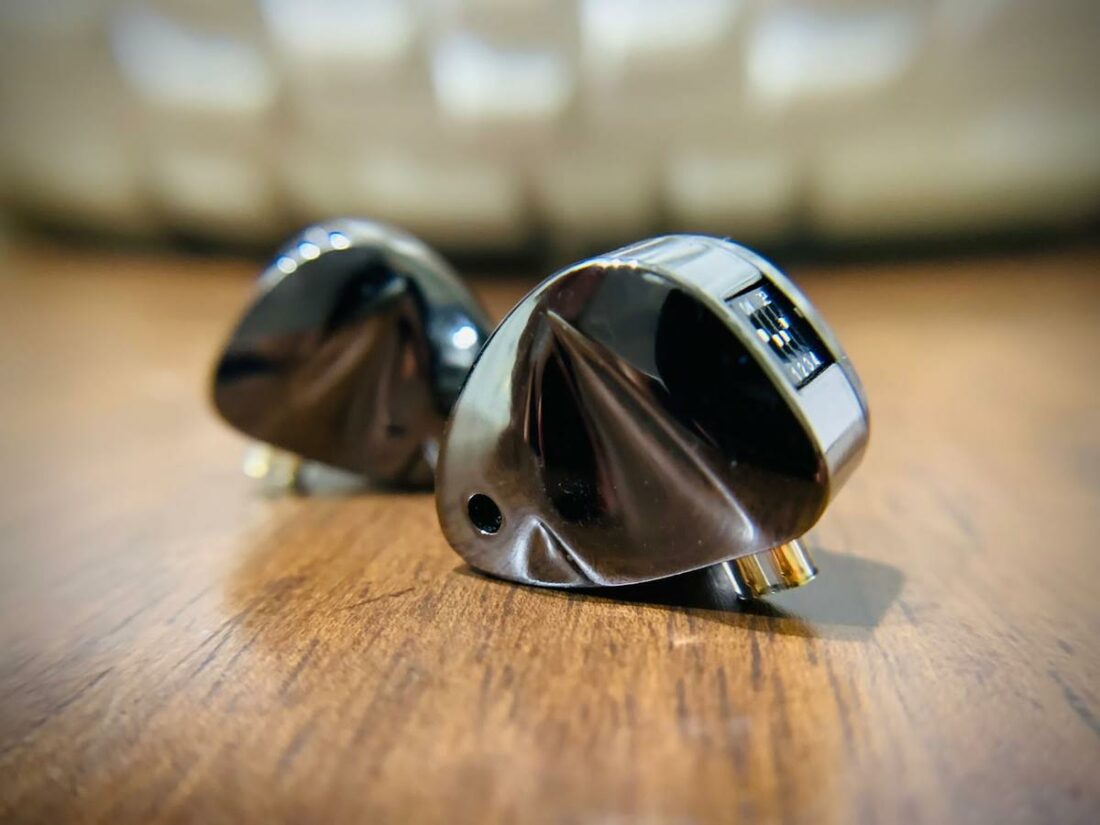
Regrettably, the sixteen potential tuning permutations are more marketing than reality, with only a 4dB difference in bass amongst these configurations. As such, you can save a few bucks to get the non-tunable variant of the D-Fi.
All is not great, as the D-Fi are glaringly lackluster in technicalities, and their tuning lies on the dark side of the equation – detail freaks best consider other options. Additionally, there is hiss with some sources.
KZ has markedly revamped its tuning philosophy with the D-Fi; the company might even be on to a home run if the next release improves on the technicalities front. The engineers could also consider implementing a set with more audible differences with the tuning switches to bestow legitimate versatility.
All things considered, the D-Fi are cheap as chips and can claim a stellar price-to-performance ratio. They are a sublime recommendation for those new to the hobby, though, for ChiFI collectors who already have more IEMs than ears, it might be wiser to save up for a more substantial upgrade.
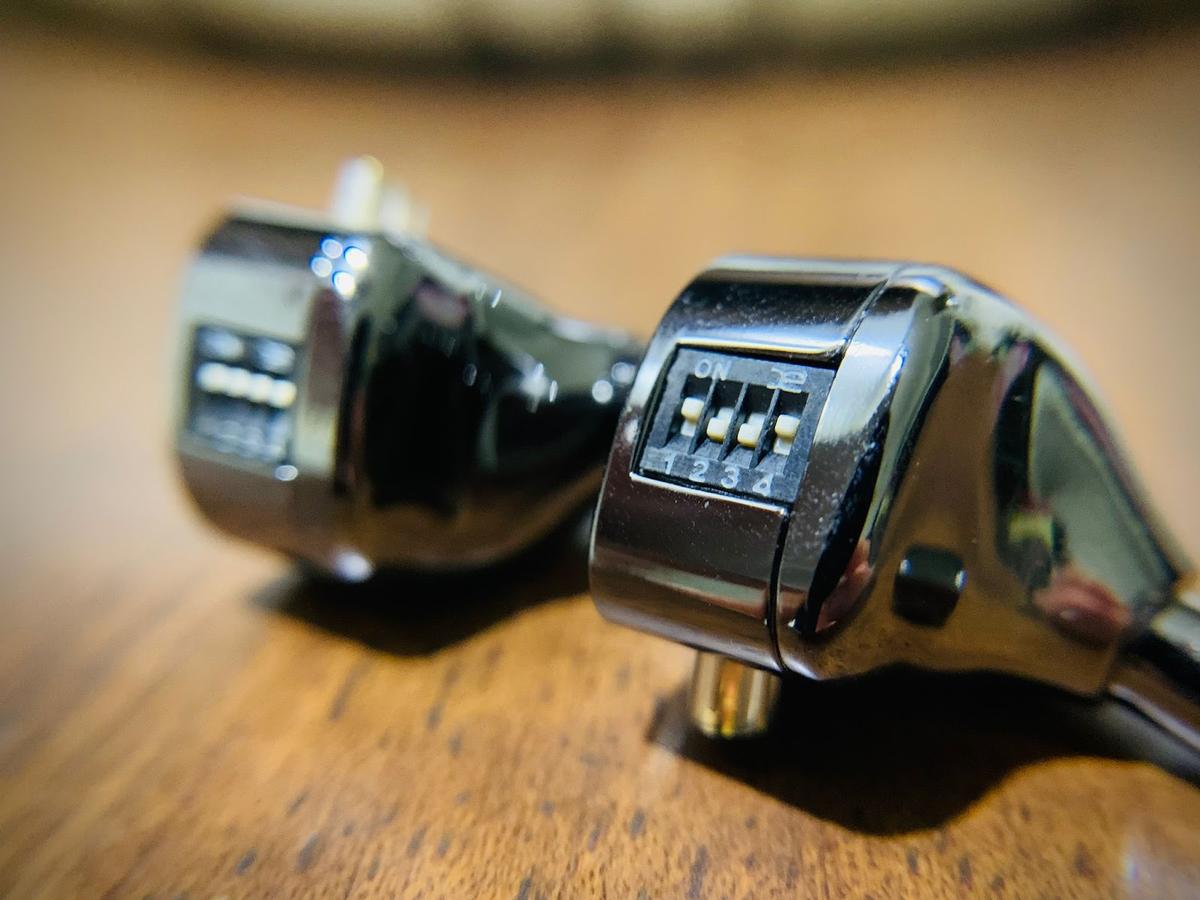
Well explained. I enjoyed reading it.Thank you.
I have a question – When can we expect Moondrop JIU DSP review?
Could you please upload a higher resolution version of the 16 permutations of the switches? Or perhaps crop it to sub-200hz and greatly zoom-in on the Y axis? So that we can make out the differences clearer